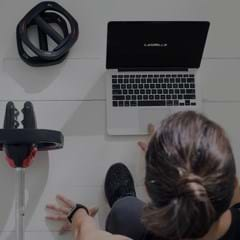“It’s alright for you thinnies,” were the reported words of UK Prime Minister Boris Johnson, when discussing the risk of contracting COVID-19. His lesson from hospitalization due to the virus? “Don’t be a fatty in your fifties.”
Questionable language aside, Boris does have a point. According to the Centers for Disease Control and Prevention (CDC), those most at risk of being severely ill from COVID-19 are older people suffering from diabetes and obesity. A recent study from the UK revealed that obesity raises the risk of dying from COVID-19 by 40 percent. A study in New York of over 4,000 people showed that obesity was the single biggest factor, after age, in whether those with COVID-19 had to be admitted to a hospital.
Known jokingly on social media as the “quarantine 15” (the typical weight in pounds that people gain in lockdown), weight-gain as a result of pandemic lockdowns is a real problem. In the UK, the COVID-19 lockdown has led to two out of three people gaining weight. In the US, a poll of 1,000 WebMD readers found nearly half of the women and almost one-quarter of the men had gained weight “due to COVID restrictions.”
Back in 2007, Jackie (my wife) and I published ‘Fighting Globesity: A Practical Guide to Personal Health and Global Sustainability’. In that book we detailed what was known at the time about the staggering costs to individual health and society as a whole, caused by physical inactivity and poor eating habits.
13 years on, despite innumerable new ways for people to exercise in gyms and at-home, we still have a long way to go. Consider the following US statistics:
- Nearly a third of Americans aged 17 to 24 cannot qualify for military service because they are obese.
- Chronic diseases are projected to cost the U.S. alone $42 trillion between 2016 and 2030, while 75% of chronic disease is driven by lifestyle choices such as inactivity and junk food consumption.
These numbers are a stark reminder that people need exercise today more than ever. Beyond the aesthetic and emotional benefits, exercise can be the difference between life and death.
In 2020, your role as a group fitness Instructor is more crucial than ever. You are in the business of motivation, and it’s this motivation that is going to keep your members coming back to class so they can remain healthy and safe. Some will argue that people can exercise outside of gyms. But the evidence shows that they don’t, because they lack motivation. No one owns the patent to the press up, and there’s no finer treadmill than the great outdoors, yet gym members are on average 14 times more active than non-members. Without motivation, most people lie on the couch eating junk-food, leading to massive health problems, including more acute cases of COVID-19.
I know that for some of you, your club is currently closed; you may be teaching online, or not at all. Others are back in the club navigating the new world of live classes with physical distancing measures. It’s a tough landscape, and there are big challenges ahead. But we’re seeing that once clubs open, people are really desperate to get back into classes. Here in New Zealand, our clubs are already at 85-90% percent of pre-COVID attendance, and people are overjoyed to be working out again.
Whether you’re teaching online, in-studio, or waiting for your club to re-open, your role as a group fitness Instructor matters more than ever before. You can bring health, community and happiness to people, helping them recover from this terrible phase of human history.








